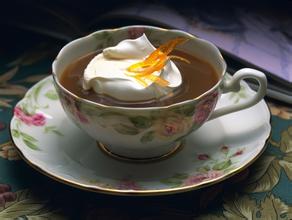The development history of Papua New Guinea
The legendary background of modern coffee.
In Papua New Guinea (Papua New)
Guinea), about 75% of coffee products come from small local farms. Many farms reclaim land in the forest, and some are in the depths of the forest, almost isolated from the rest of the world. The coffee in this country is grown at altitude.
The highland is 1300 to 1800 meters, so the quality is very high. Although coffee is also grown in some lowlands, the yield is relatively small. Most of the locally grown coffee is grown under natural conditions.
There are many problems and high costs in the transportation of fertilizers and pesticides to farms.
The coffee industry plays an important role in the country's economy. More than 1 million people are directly and indirectly engaged in the industry. The government encourages planting by offering a minimum purchase price. The industry itself is made up of the coffee industry committee.
(Coffee Industry Board) Control. The commission is located in Goroka, in the eastern part of the island, while exports are handled by private companies.
The frost in 1975 destroyed most coffee crops in Brazil, but stimulated the development of coffee in Papua New Guinea. The Government has implemented a scheme to finance the creation of about 20 hectares of coffee plantations in rural or collective land ownership. This measure has indeed increased the penetration of coffee in the local economy, with annual production reaching 1 million bags by 1990.
However, it is almost inevitable that the surge in production leads to a decline in quality. Before 1991, the quality of coffee was good, and most of it belonged to open Y and so on. After 1991, the quality gradually declined, and with it the European market was lost. Y Coffee
The extra prices once owned are also gradually falling. This is related to the country's policy of "one grade, one price". This policy is not feasible for an industry as volatile as coffee. As a result, poor quality coffee
Beans have damaged the image of high quality standards such as Y coffee, resulting in a backlog.
The government's response is to establish a new level of quality, temporarily suspend the production of coffee such as Y, and no longer implement the policy of "one grade, one price". This allows buyers to price according to quality, which is bound to be beneficial to farmers who produce shoddy coffee beans.
Income has an impact. By 1993, the quality problem had been basically solved. Most regular customers are buying coffee from Papua New Guinea again. Coffee such as Y is now sold at a slightly lower extra price, which shows its quality
The quantity has increased.
Although coffee trees grow vigorously in some places, the coffee beans harvested vary from raw to ripe due to the lack of persistence of the growers. AA is rare, and you can usually buy An and AB grades. The main characteristics of grade A coffee are: plump granules, light acidity and endless aftertaste.

Important Notice :
前街咖啡 FrontStreet Coffee has moved to new addredd:
FrontStreet Coffee Address: 315,Donghua East Road,GuangZhou
Tel:020 38364473
- Prev

Indian Coffee Manor Arab Plantation Coffee
The best Indian coffee is also classified as Arabian plantation coffee, with the best grades A, B, C and T. Monsoon coffee is divided into high-quality Malabar (Monsooned MalabarAA grade coffee) and monsoon Bassanicoli (Monsooned Basanically) coffee. India also produces some bean-shaped berry coffee. At present, the problem facing the coffee industry is bureaucracy.
- Next

Where is Yunnan small seed coffee mainly produced?
The western and southern parts of Yunnan Province are located between 15 N and the Tropic of Cancer, most of which are 1000-2000 meters above sea level. The topography is dominated by mountains and slopes, with large ups and downs, fertile soil, sufficient sunshine, rich rainfall and large temperature difference between day and night. These unique natural conditions form the special taste of Yunnan small-grain coffee, which is strong but not bitter, fragrant but not strong, slightly fruity. As early as fifty
Related
- Does Rose Summer choose Blue, Green or Red? Detailed explanation of Rose Summer Coffee plots and Classification in Panamanian Jade Manor
- What is the difference between the origin, producing area, processing plant, cooperative and manor of coffee beans?
- How fine does the espresso powder fit? how to grind the espresso?
- Sca coffee roasting degree color card coffee roasting degree 8 roasting color values what do you mean?
- The practice of lattes: how to make lattes at home
- Introduction to Indonesian Fine Coffee beans-- Java Coffee producing area of Indonesian Arabica Coffee
- How much will the flavor of light and medium roasted rose summer be expressed? What baking level is rose summer suitable for?
- Introduction to the characteristics of washing, sun-drying or wet-planing coffee commonly used in Mantenin, Indonesia
- Price characteristics of Arabica Coffee Bean Starbucks introduction to Manning Coffee Bean Taste producing area Variety Manor
- What is the authentic Yega flavor? What are the flavor characteristics of the really excellent Yejasuffi coffee beans?

